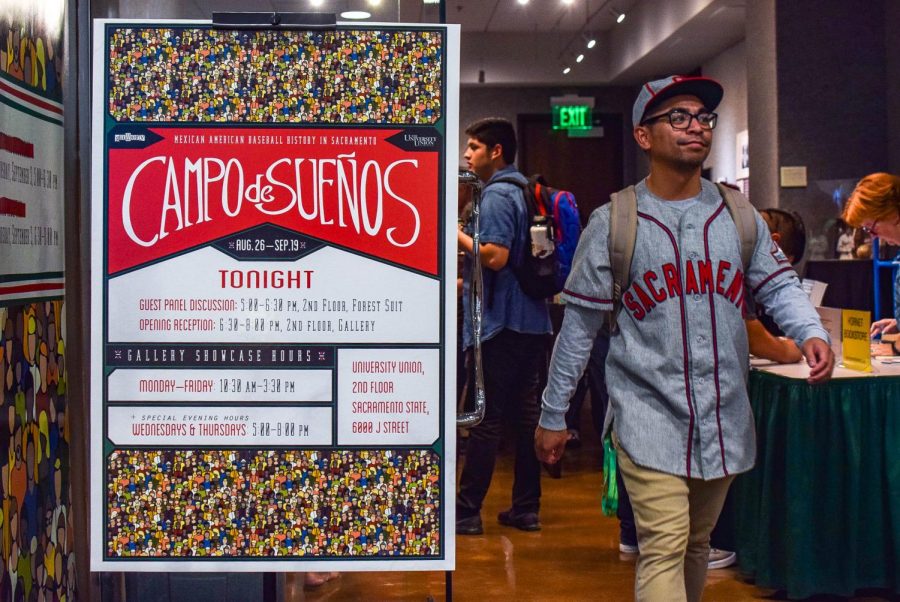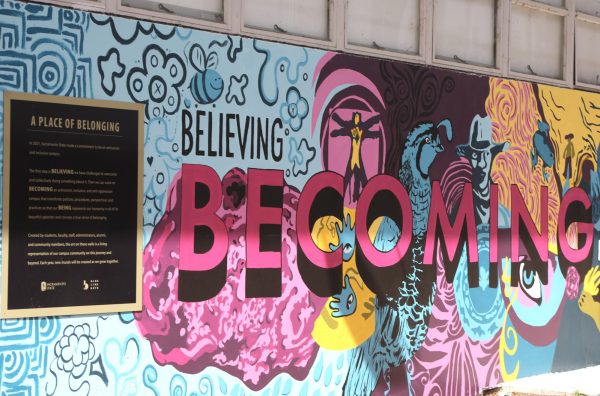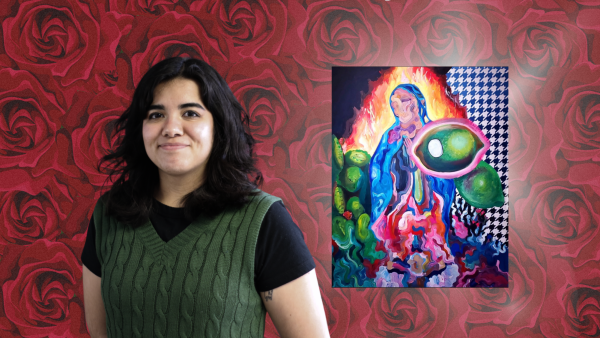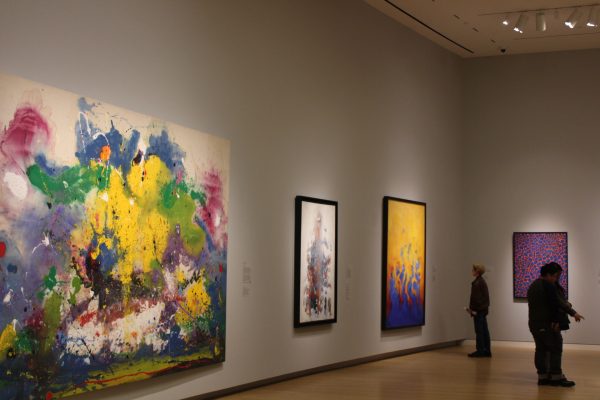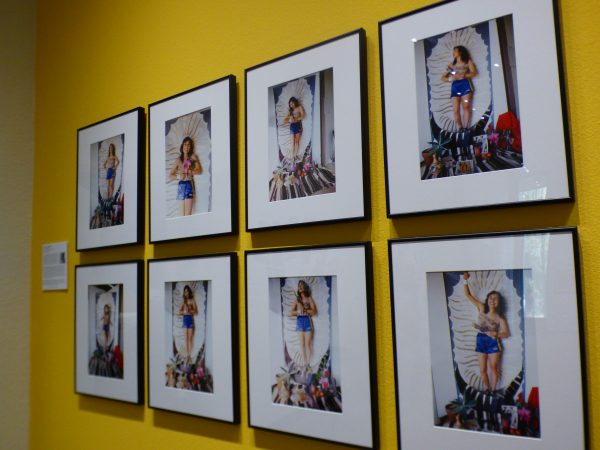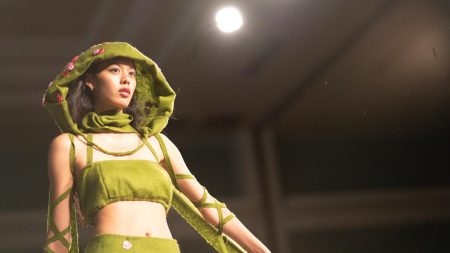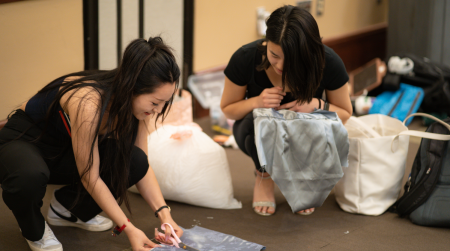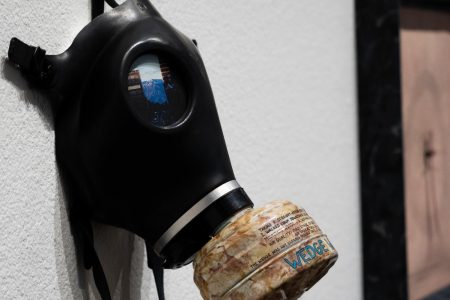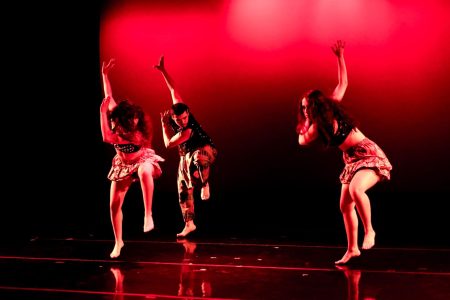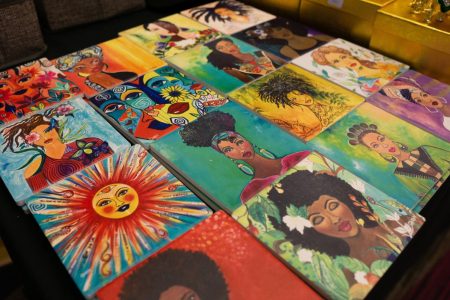Sac State hosts art gallery showcasing Mexican American baseball history
‘Campo de Sueños’ will be open until Sept. 19
The front sign of Sac State’s ‘Campo de Sueños’ exhibit in the University Union Thursday, Sept. 5. The exhibit showcased Mexican American baseball and softball history in Sacramento.
“Campo de Sueños,” an art exhibit in Sacramento State’s University Union, is showcasing the Mexican American history of baseball and softball in Sacramento until Sept. 19.
The exhibit held its opening reception on Thursday, complete with a panel discussion featuring members of the Mexican American baseball community.
Mark Ocegueda, current assistant professor of history at Sac State, said he created the exhibit to educate the public about the role Mexican Americans have played in baseball history.
Ocegueda is an advisor for the Smithsonian Institute’s “Latinos and Baseball: In the Barrios and the Big Leagues” exhibit project at the National Museum of American History. He also co-authored the photo-documentary books entitled “Mexican American Baseball in the Inland Empire,” “Mexican American Baseball in Sacramento,” and “Mexican American Baseball in the Pomona Valley.”
The project started at Cal State Los Angeles in 2004. Its purpose was to collect, preserve, document and promote the history of Mexican Americans at all levels of baseball and softball.
The exhibit, “Campo de Sueños: Mexican-American Baseball in Sacramento,” focuses on the labor of Mexican people in regions of agricultural and railroad industry. According to the exhibit, they leaned on baseball as an activity through which to come together as a community.
Story continues below photo gallery.
Baseball and softball gave men and women a sense of identity and reinforced pride and ethic for their community.
Facundo “Cuno” Barragán, the first Mexican American to make the major leagues, was born and raised in Sacramento in 1932. He attended Sacramento City College and played in the Pacific Coast League’s Sacramento Solons before joining the Chicago Cubs in 1961.
“My biggest thrill was hitting a home run for the Chicago Cubs,” Barragán said.
The home run took place nearly six decades ago, on Sept. 1, 1961. That was Barragán’s first and only home run before ending his career in 1963.
Barragán retired and returned to Sacramento to mentor the next generation of baseball players.
Juanita Ramirez is the daughter of Consuelo “Chelo” Sánchez and Manuel Ramirez and was one of the panel speakers. She became the first Latina to join the Sacramento Police Department along with her two siblings, she said.
Sánchez was born in 1923 and grew up in an immigrant community in downtown Sacramento near Eighth and O Street. She played for the Mexican Athletic Club (MAC) women’s team during the late 1930s on Tenth and P Street, now known as Roosevelt Park.
Because of violence during the Mexican Revolution, Ramirez and his mother, Damiana Baro Ramirez, migrated from Mazatlán, Mexico to Sacramento. He lived on Sixth and P Street, close to where he first met Sánchez in a Ranchero Club near his house.
Ramirez made a long career as a baseball player before and after joining the army. Returning home, he played and managed the MAC baseball team.
With the help of the Mexican American Hall of Fame Sports Association, the story of the overlooked Mexican American community was able to be brought to life.
Despite facing segregation and racism in the community, Mexican Americans carved out their own spaces and empathized with each other. Some players featured in the exhibit returned to the field as coaches, with hopes to keep the community strong and alive.
While some players went on to play for the big leagues, the community and heart lies in the sandlots of Sacramento. The community of Mexican American baseball players continues to grow, and the infamous players featured in the exhibit have made it clear that they intend on leaving a lasting impact on today’s Mexican youth.
RELATED: Q&A: Sac State visiting artist talks art exhibit ‘Save/[eARTh]’
Your donation will support the student journalists of Sacramento State University. Your contribution will allow us to purchase equipment and cover our annual website hosting costs.
































































































































